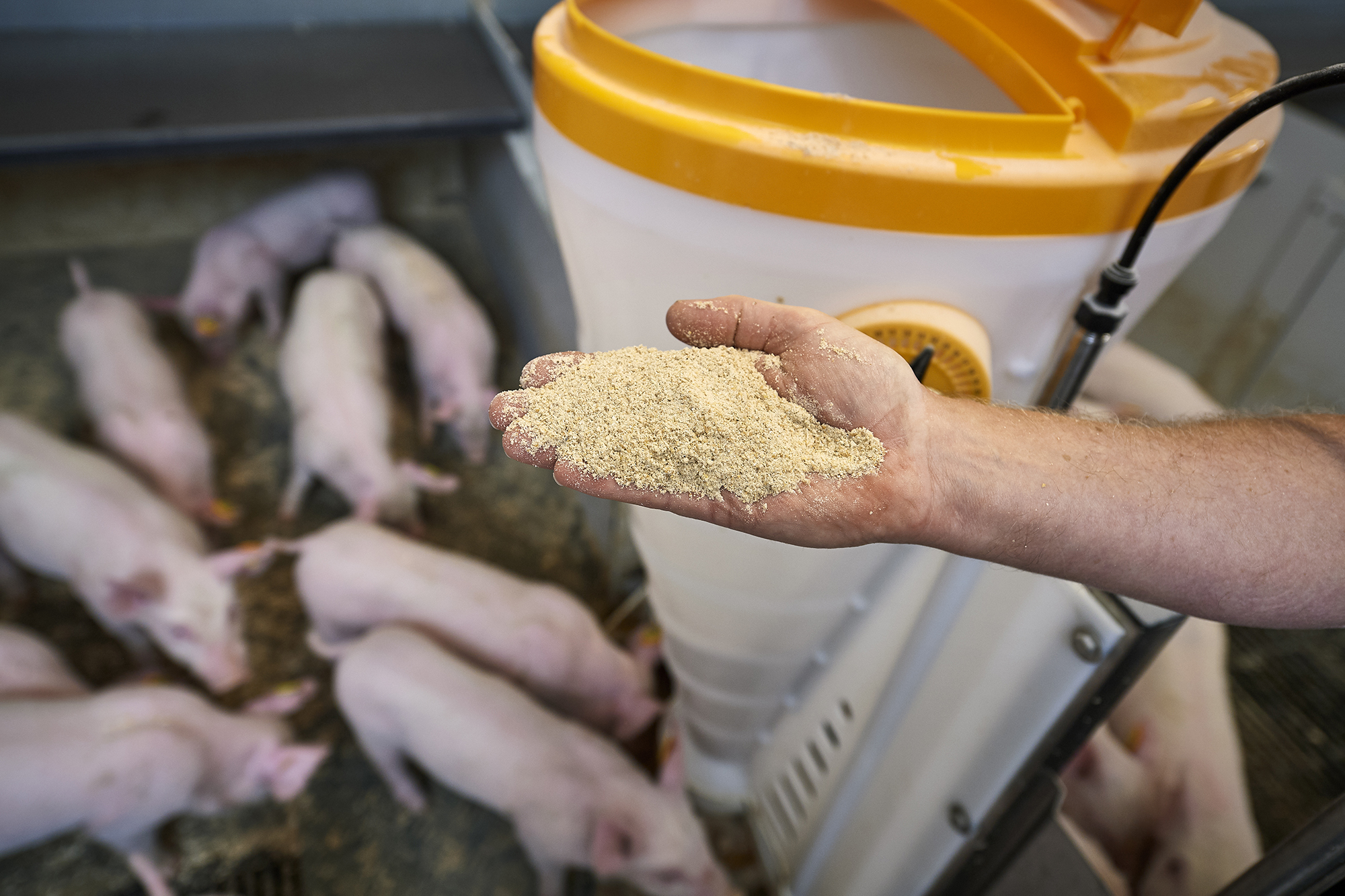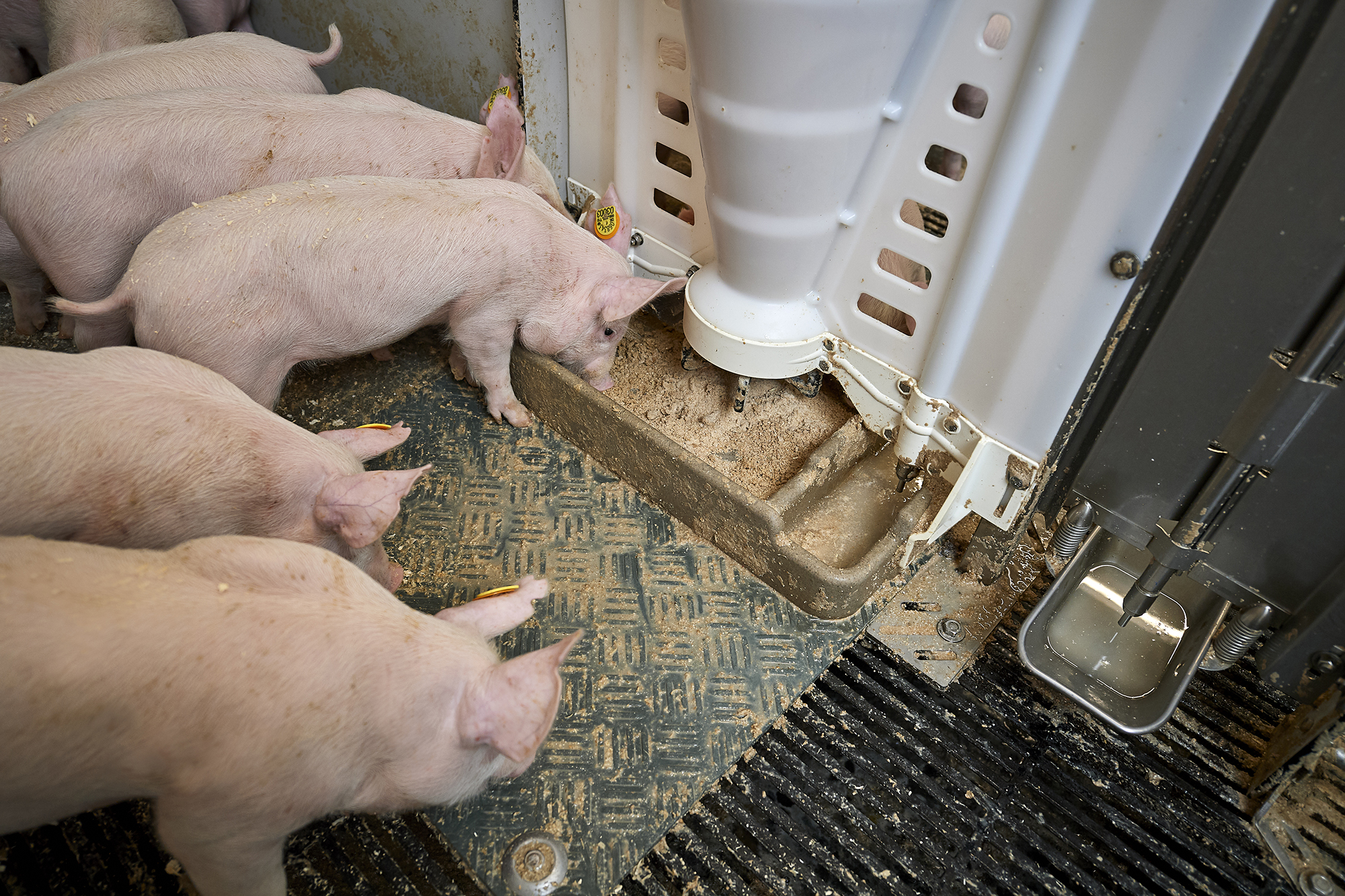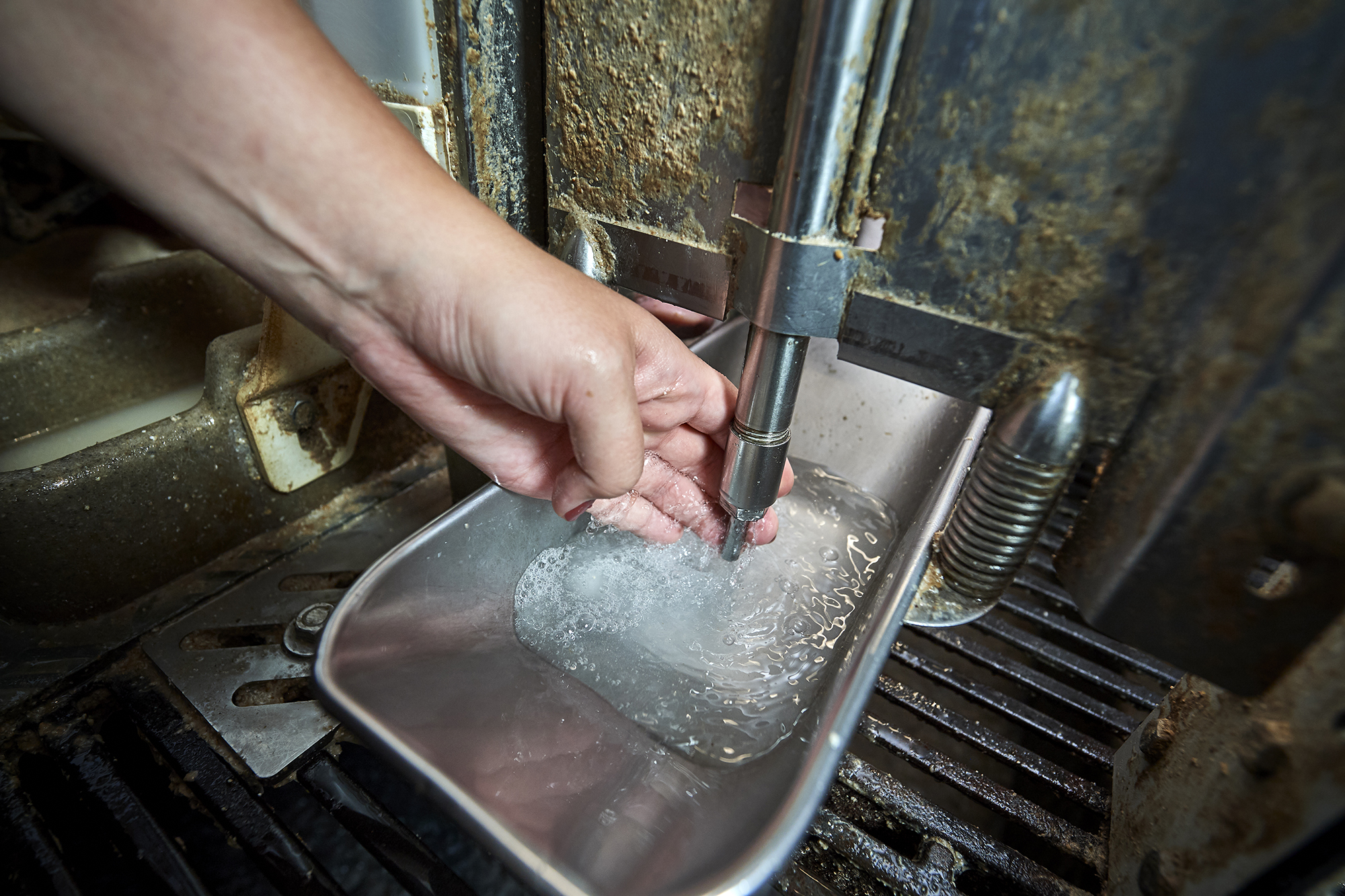Weaners – pigs from 7 – 30 kg
Targets:
- Ensure a successful transition from milk to feed.
- Support robust growth and development.
- Establish a healthy increase in daily gain.
Feeding the weaned pig
DanBred pigs have a huge potential for growth which should be supported through applicable feeding from the very first day of weaning
The table below shows the recommended content of energy and selected nutrients per kg feed in different weight stages. SID refers to the Standardized Ileal Digestible content.
| Energy | 6-9 kg | 9-15 kg | 15-30 kg |
|---|---|---|---|
| ME, MJ/kg feed | 14.5 | 14.0 | 13.6 |
| NE, MJ/kg feed | 10.7 | 10.3 | 10.0 |
| Danish Feed Units, FU/kg feed | 1.20 | 1.16 | 1.12 |
| *The relation between MJ ME/MJ NE depends on the raw materials. | |||
| Protein. SID min g/kg | 158 | 162 | 160 |
| Lysine. SID g/kg | 13.2 | 12.8 | 12.9 |
| Digestible phosphorus. g/kg | 4.0 | 3.7 | 3.4 |
| Calcium (without phytase). g/kg | 8.4 | 9.3 | 9.5 |
The full nutrient tables can be found here.
To support the robust development of the pigs it is important to focus on raw materials which help optimise growth and promotes health:
- Highly digestible protein sources which are low on anti-nutritional factors:
- Dairy products.
- Fishmeal.
- Potato protein.
- Soy protein concentrate.
- Raw materials that ensure a rapid increase of energy:
- Heat-treated grain.
- Sugar products (lactose, dextrose, etc.).
- Dairy products (milk powder, whey powder, various milk substitutes).
- The correct amount of high-quality micro minerals, vitamins and enzymes.
- Use organic acids and toxin binders.
 |
 |
To give the young pigs the best start in production it is advised to avoid feeding the following raw materials to weaners: rye, rape products, sunflower meal, sugar beet pellets and peas. The advised maximum content of selected feed ingredients can be found here.
Feeding strategy
Ad libitum feeding can be used in the weaner sections. The main focus should be to ensure a smooth and successful transition from milk-based feed to solid feed:
- Start the transition before weaning – at the age of 10-14 days:
- Use a pre-starter feed or a liquid starter mix – find recommendations here.
- Feeding together with the sows can promote eating behaviour.
- Start by feeding small amounts to avoid feed wastage.
 |
 |
- Stimulate feed intake in the first days after weaning by feeding small amounts several times a day.
- Use the same feed both before and after weaning.
- Increase the amount of feed gradually from approximate appetite to ad libitum feeding.
- Sort piglets according to size and sex at weaning feed accordingly
- The smallest 10-20 % of the piglets are kept on starter feed for longer
- Save feed costs by sorting the pigs by sex – read more here.
Maintaining gastro-intestinal health is important for optimal growth among the pigs. Incipient signs of pigs that do not fully thrive can be handled by optimising the feed mix slightly, whit the aim of accommodating high health and good gastro-intestinal development:
- Reducing the amino acids and/or crude protein level by 5-10% for a while may help alleviate diarrhoea issues, this can temporarily reduce growth a bit but will be highly beneficial for health in the long run.
- Calcium levels can be reduced by 5-7% – be aware to supply enough calcium to maintain sufficient bone mineralization.
- Ensure gradual changes between feed mixes. The shift to the new mix should take place during the course of approx. one week.
- Never abruptly change the feed from one day to the other this might cause the pigs to stop eating, reducing growth significantly

Feed accessibility
To support a continuously high feed intake, access is important. This includes having enough feeding space for each pig as well as installing feeders with easy access without encouraging feed waste.
Feeding weaners ad libitum from weaning to approx. 30 kilos will increase feed intake and support optimised daily gain.
Ensure correct adjustment of the feeders where fresh feed is flowing continuously 24 hours a day. Empty feeders will decrease feed intake and can create behavioural issues among the pigs. Overloaded feeders spilling to the floor, can besides being a waste of money also reduce appetite and lead to a low daily gain.
Ensure the troughs are cleaned regularly at least once per day – feeder settings should be adjusted accordingly.



Water for weaners
Sufficient amounts and quality of water are crucial for optimal growth.
The water supply must be designed with easy access for all animal sizes and must support several weaners drinking at the same time. Recommendations on water quality can be found here.
 |
 |
Correct water flow throughout the production facility is important. The water supply should be able to maintain sufficient flow rates for all drinkers while the main part of the drinkers is in use.
| Type | Needs | Pigs per drinker | Comment |
|---|---|---|---|
| Drinking bowl | Min. 1 l/min. | 20-50 pigs per bowl | Minimum 2 bowls per pen or an alternative water option |
| Drinking nipple | Min. 0.5 l/min. – Max. 0.8 l/min. | 10 pigs per nipple | Place 30 cm above floor level. Minimum 2 nipples per pen. |
* Due to growth, health and welfare, a backup water supply should always be available for the pigs in case of defects.
Everyday tasks among the weaners
Inspect all animals at least once, but preferably twice, a day
Pay particular attention to:
- Health – do any of the pigs or the environment show signs of disease?
- Do all pigs get up? If not check if the animal is sick or hurt.
- Check the feed dispensers and water nipples – check them and keep them clean.
A successful transition from the farrowing unit to the weaning unit is the key to successful the productivity of your pigs. From the weaner unit, the pigs’ journey continues through the rest of the production facility.

